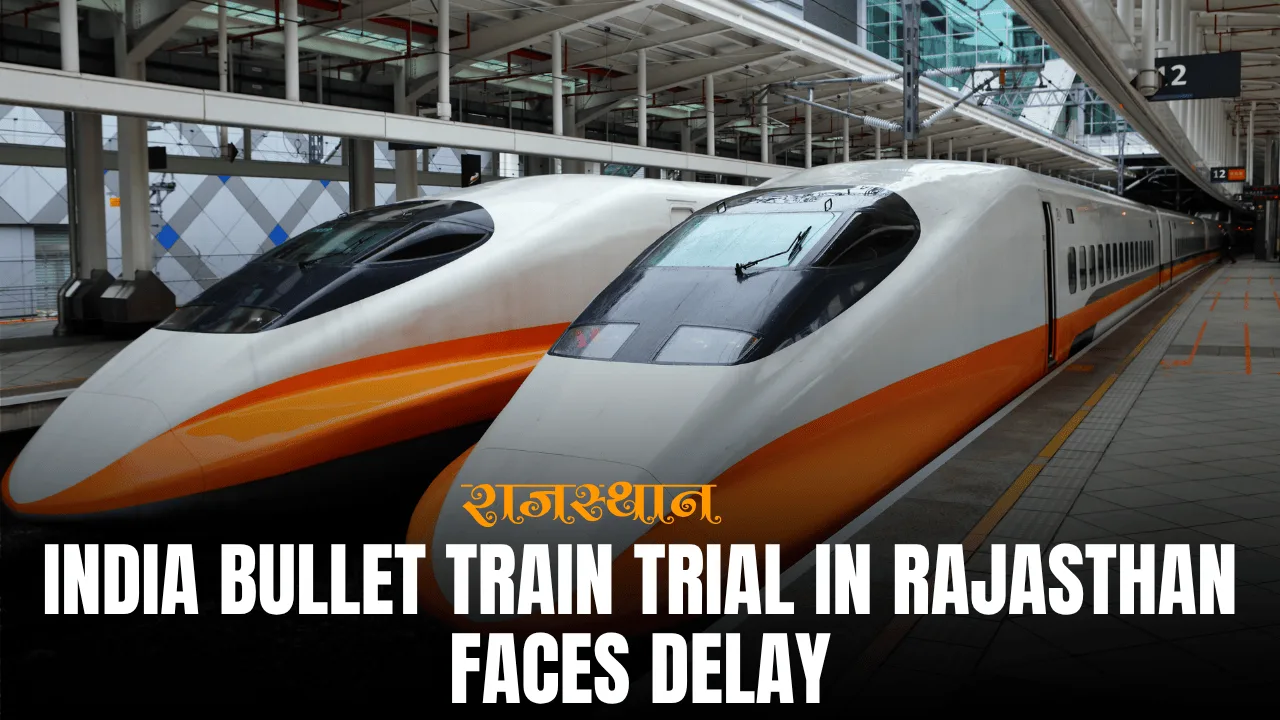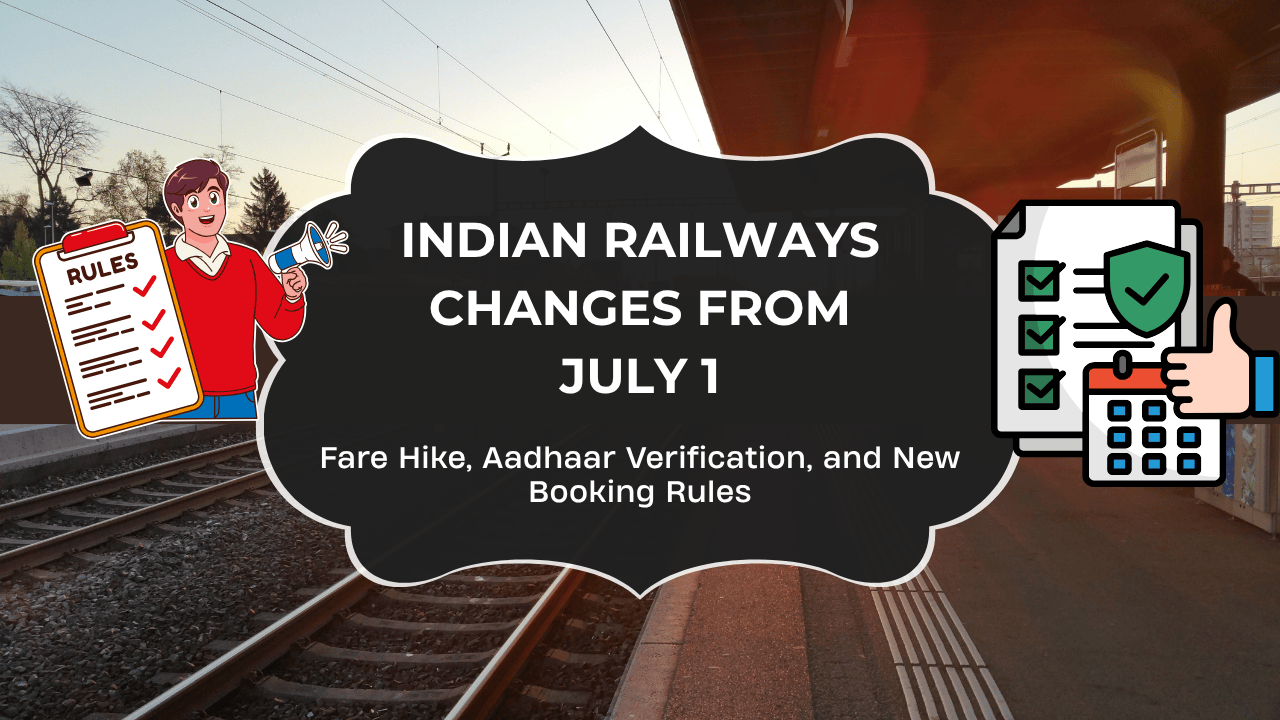Listen to This Article
India’s First High-Speed Rail Trial Track: A 200 kmph Dream Stalled by Bureaucratic Hurdles
India is witnessing a monumental transformation in its railway infrastructure, especially with the ambitious plans to introduce bullet trains. However, the progress of one such critical project—India’s first high-speed railway trial track on the Jaipur-Jodhpur route—has hit a roadblock. While over 80% of the construction is complete, the lack of permission to lay a mere 2.5 km stretch near Sambhar Salt Lake threatens to derail the schedule. 🚂
🌍 The Vision Behind the Project
In 2019-2020, Indian Railways announced plans to construct a 64 km high-speed trial track between Gudha (near Nawal) and Meethri. This dedicated stretch was envisioned to enable the testing of high-speed trains, including future bullet train models, at speeds up to 200 kmph. Such trial tracks are a common feature in countries like China, the USA, and Australia, where train testing is carried out without affecting regular operations.
📆 Timeline and Progress: 80% Complete
Construction began in 2020 with full force. By 2024, the railways reported that nearly 80% of the track had been laid, except for a crucial 2.5 km section passing through the Sambhar Salt Lake area. This portion has not yet received the green light from the Ministry of Environment, Forest and Climate Change, putting the entire project in limbo.
🌐 Ramsar Site vs. National Infrastructure
Sambhar Lake is a Ramsar site—a wetland of international importance. The State Wetland Authority argues that any new construction is restricted due to the environmental sensitivity of the area. However, Indian Railways counters this claim, stating that existing rail tracks for salt transport and the main Jaipur-Jodhpur line already run through the same region.
🚧 Bureaucratic Red Tape: A Major Roadblock
Despite numerous proposals, the Ministry of Environment has not provided the necessary clearances. For the past three years, proposals have been either ignored or returned with objections. Officials claim that technical works like signaling, testing bays, and fencing are stalled because the track cannot be operational without this 2.5 km section.
💡 Why This Trial Track Matters
-
High-Speed Testing: India currently lacks a dedicated space to test new engines and coaches at high speeds.
-
Future-Proofing: The track will support trials of future bullet train models, reducing the need to halt ongoing passenger traffic for such experiments.
-
Safety Protocols: Dedicated trial zones will allow Indian Railways to enforce stricter testing standards, ensuring passenger safety at high speeds.
🚕 Bullet Train Potential: Reaching 200 kmph
Once complete, this trial track will serve as a foundation for India’s bullet train vision. Trains will be tested at speeds of 200 kmph, bringing India closer to international high-speed rail standards. The learnings from these tests will feed directly into commercial bullet train routes like the Mumbai-Ahmedabad corridor.
 Unlock Your Savings Today!
Unlock Your Savings Today!
Get the best deals with unbeatable service and exclusive offers.

🤝 Expert Opinions: A Call to Action
Environmental and railway experts urge immediate action. According to them, this delay not only risks crores of investment but also sends a poor message regarding India’s commitment to modern infrastructure. Many argue that if salt trains and freight lines can pass through the lake, a dedicated high-speed trial track should not be an exception.
🚫 Risks of Delay: What’s at Stake?
-
Financial Loss: Idle equipment and postponed procurement can lead to increased project expenses.
-
Strategic Setback: Missing the December 2025 commissioning target may affect future bullet train timelines.
-
Reputational Damage: Delays can cast doubts on India's capability to manage large-scale infrastructure efficiently.
📅 The Road Ahead: What Needs to Happen
-
Fast-Track Clearances: The Ministry of Environment needs to expedite approval for this critical stretch.
-
Interdepartmental Collaboration: Better coordination between the Railways, State Wetland Authority, and Central Ministry is crucial.
-
Public Support: Raising public awareness through media and forums can put pressure on decision-makers to act swiftly.
🌟 Conclusion: A High-Speed Dream in Waiting
India's journey toward high-speed rail is filled with promise. The Jaipur-Jodhpur high-speed trial track could serve as a launchpad for future innovations in rail transport. However, bureaucratic delays are threatening to derail this vision. With over 80% of the work already complete, the onus lies on environmental and governmental bodies to find a workable solution.
This is not just about a 2.5 km stretch; it's about India's future in transportation. Let us not allow red tape to stall a revolution in mobility. ✈️🌍
 Grow Your Business with Proven Digital Marketing
Grow Your Business with Proven Digital Marketing
Ready to attract more customers and outshine your competition? Our tailored digital marketing strategies help you rank higher, generate qualified leads, and build a brand people trust. Let’s take your business to the next level.
Digital Marketing Solutions in Leading Cities

✅ Advantages of India’s High-Speed Rail Test Track Project
🚄 1. Boosts Bullet Train Development
This track enables testing of trains at speeds up to 200 kmph, paving the way for future bullet train operations in India.
🧪 2. Dedicated Testing Infrastructure
India currently lacks exclusive high-speed trial facilities. This track would allow real-world testing without disrupting commercial traffic.
🏗️ 3. Infrastructure Modernization
The project represents a big leap in modernizing Indian Railways infrastructure, especially for new-generation trains and coaches.
🌐 4. Global Benchmarking
With countries like Japan, China, and the U.S. having such tracks, India joins the league of nations that are investing in high-speed train innovation.
💼 5. Economic and Employment Impact
Construction and operation of the track can generate jobs and attract technology partners, boosting the local and national economy.
❌ Disadvantages and Challenges
🐦 1. Environmental Concerns
An important segment of the project runs through Sambhar Lake, a designated Ramsar wetland site. This poses a significant ecological risk and has triggered objections.
🕒 2. Bureaucratic Delays
Despite 80% completion, the remaining 2.5 km stretch remains stalled due to lack of environmental clearance, delaying the project by years.
🧾 3. Rising Costs
Delays can result in budget overruns. Keeping equipment, machinery, and labor idle adds to the financial strain on Indian Railways.
📉 4. Missed Targets
Originally expected to be commissioned by December 2025, delays in permissions make this deadline seem unachievable.
🔁 5. Risk of Redundancy
If delays persist, technology and designs may become outdated, reducing the usefulness of the completed track by the time it becomes operational.

 Disclaimer
Disclaimer
The views expressed by experts in this article are their own and do not necessarily reflect the opinions of any website, organization, institution, or affiliated entity. If you have any concerns regarding this article, please contact us at contact@quantamminds.com and also on WhatsApp
Frequently Asked Questions
What is the purpose of the high-speed rail trial track in Rajasthan?
The trial track, located between Gudha and Meethri near Sambhar Lake, is designed to test new engines, coaches, and high-speed technologies for Indian Railways. It allows safe trials of bullet train components at speeds of up to 200 kmph without interrupting existing passenger services.
Why is the project facing delays despite being 80% complete?
The main reason for the delay is the lack of environmental clearance for a 2.5 km stretch passing through the Sambhar Lake wetland, a Ramsar site. Despite multiple proposals, the Ministry of Environment and State Wetland Authority have raised objections, stalling full track completion.
How will this track benefit the future of bullet trains in India?
This track will serve as a dedicated testing ground for high-speed rail technology, enabling Indian Railways to test bullet trains, engines, and coaches in real-world conditions. This is a crucial step toward launching India’s own bullet train network.
Why was Sambhar Lake chosen for this project despite being a protected area?
The chosen corridor already includes existing railway lines for salt transport and passenger trains. Authorities believed the new trial track could coexist with minimal ecological disruption. However, the area’s protected status under international Ramsar conventions has complicated permissions.
What happens if the trial track doesn’t get completed on time?
Failure to complete the track will delay the testing of new trains and impact timelines for India’s bullet train ambitions. It could also result in financial losses and make the already-laid infrastructure outdated or underutilized.








 Ashwani Kumar on 2025-07-22
Ashwani Kumar on 2025-07-22





